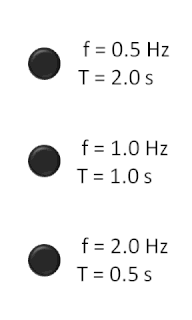
The hertz (symbol: Hz) is the unit of frequency in the International System of Units (SI) and is defined as one cycle per second. The hertz is an SI derived unit whose expression in terms of SI base units is s−1, meaning that one hertz is the reciprocal of one second. It is named after Heinrich Rudolf Hertz (1857–1894), the first person to provide conclusive proof of the existence of electromagnetic waves. Hertz are commonly expressed in multiples: kilohertz (103 Hz, kHz), megahertz (106 Hz, MHz), gigahertz (109 Hz, GHz), terahertz (1012 Hz, THz).

The Intel 486, officially named i486 and also known as 80486, is a microprocessor. It is a higher-performance follow-up to the Intel 386. The i486 was introduced in 1989. It represents the fourth generation of binary compatible CPUs following the 8086 of 1978, the Intel 80286 of 1982, and 1985's i386.
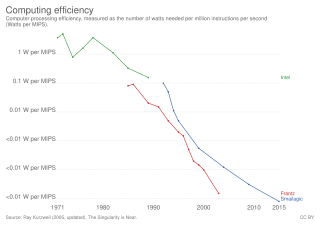
Instructions per second (IPS) is a measure of a computer's processor speed. For complex instruction set computers (CISCs), different instructions take different amounts of time, so the value measured depends on the instruction mix; even for comparing processors in the same family the IPS measurement can be problematic. Many reported IPS values have represented "peak" execution rates on artificial instruction sequences with few branches and no cache contention, whereas realistic workloads typically lead to significantly lower IPS values. Memory hierarchy also greatly affects processor performance, an issue barely considered in IPS calculations. Because of these problems, synthetic benchmarks such as Dhrystone are now generally used to estimate computer performance in commonly used applications, and raw IPS has fallen into disuse.
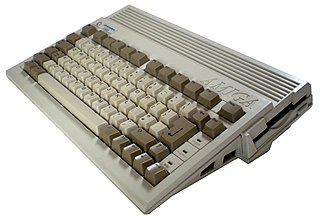
The Amiga 600, also known as the A600, is a home computer introduced in March 1992. It is the final Amiga model based on the Motorola 68000 and the 1990 Amiga Enhanced Chip Set. A redesign of the Amiga 500 Plus, it adds the option of an internal hard disk drive and a PCMCIA port. Lacking a numeric keypad, the A600 is only slightly larger than an IBM PC keyboard, weighing approximately 6 pounds. It shipped with AmigaOS 2.0, which was considered more user-friendly than earlier versions of the operating system.

The K6-III was an x86 microprocessor line manufactured by AMD that launched on February 22, 1999. The launch consisted of both 400 and 450 MHz models and was based on the preceding K6-2 architecture. Its improved 256 KB on-chip L2 cache gave it significant improvements in system performance over its predecessor the K6-2. The K6-III was the last processor officially released for desktop Socket 7 systems, however later mobile K6-III+ and K6-2+ processors could be run unofficially in certain socket 7 motherboards if an updated BIOS was made available for a given board.

The Atari Falcon030, released in 1992, was the final personal computer product from Atari Corporation. A high-end model of the Atari ST line, the machine is based on a Motorola 68030 CPU and a Motorola 56001 digital signal processor, a feature which distinguishes it from most other microcomputers of the era. It includes a new VIDEL programmable graphics system which greatly improves graphics capabilities.

The Multimedia PC (MPC) was a recommended configuration for a personal computer (PC) with a CD-ROM drive. The standard was set and named by the "Multimedia PC Marketing Council", which was a working group of the Software Publishers Association. The MPMC comprised companies including Microsoft, Creative Labs, Dell, Gateway, and Fujitsu. Any PC with the required standards could be called an "MPC" by licensing the use of the logo from the SPA.

The X68000 is a home computer created by Sharp Corporation. It was first released in 1987 and sold only in Japan. Gaming was a major use of the X68000, with custom sprite hardware and an 8-channel sound chip enabling ports of contemporaneous arcade video games.
The CP System II or CPS-2 is an arcade system board that Capcom first used in 1993 for Super Street Fighter II. It was the successor to their previous CP System and Capcom Power System Changer arcade hardware and was succeeded by the CP System III hardware in 1996, of which the CPS-2 would outlive by over four years. The arcade system had new releases for it until the end of 2003, ending with Hyper Street Fighter II.
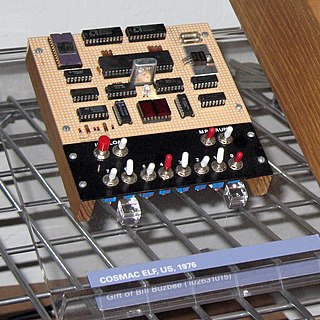
The COSMAC Elf was an RCA 1802 microprocessor-based computer described in a series of construction articles in Popular Electronics magazine in 1976 and 1977. Through the back pages of electronics magazines, both Netronics and Quest Electronics offered low-priced, enhanced kits that were based on this design. The system was a very early single-board personal computer. It was operated without built-in ROMs and programs were entered directly with help of the CPU integrated DMA using 8 toggle switches and an Input push button.

The Namco System 22 is the successor to the Namco System 21 arcade system board. It debuted in 1992 with Sim Drive in Japan, followed by a worldwide debut in 1993 with Ridge Racer.

The Macintosh Quadra 700 was a personal computer designed, manufactured and sold by Apple Computer, Inc. from October 1991 to March 1993. It was introduced alongside the Quadra 900 as the first computers in the Quadra series using Motorola 68040 processor. It is also the first computer from Apple to be housed in a mini-tower form factor, which in 1991 was becoming a popular alternative to standard desktop-on-monitor cases that were common through the 1980s.
The Taito Type X is an arcade system board released in 2004 by game developer and publisher Taito.
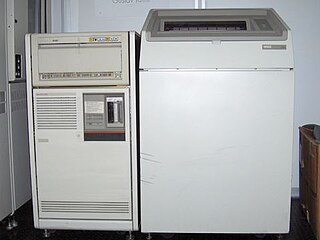
The MicroVAX is a discontinued family of low-cost minicomputers developed and manufactured by Digital Equipment Corporation (DEC). The first model, the MicroVAX I, was introduced in 1983. They used processors that implemented the VAX instruction set architecture (ISA) and were succeeded by the VAX 4000. Many members of the MicroVAX family had corresponding VAXstation variants, which primarily differ by the addition of graphics hardware. The MicroVAX family supports Digital's VMS and ULTRIX operating systems. Prior to VMS V5.0, MicroVAX hardware required a dedicated version of VMS named MicroVMS.
Atari System refers to two arcade system boards introduced in 1984 for use in various arcade games from Atari Games. Two versions of the board were released, Atari System 1 and Atari System 2.

Bomber Man World is a 1992 video game released by Irem under license from Hudson Soft for arcades. It is part of the Bomberman series. It was the second Bomberman game to be released for arcades, preceded by Bomberman (1991), which was also released by Irem.
Irem M-107 is an arcade system board introduced in 1993 by Irem.
Irem M-92 is an arcade system board introduced in 1991 by Irem.
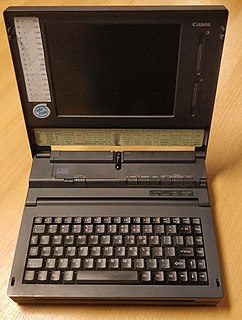
The Canon NoteJet is a series of notebook computers which include a printer and scanner that was manufactured from 1993 to 1995 by a joint venture between the Canon subsidiary Canon Computer Systems Inc. and IBM subsidiary IBM Japan. The Canon branded series was sold worldwide except in Japan, where the similar IBM ThinkPad 555BJ and 550BJ was sold. The European model did not use the NoteJet branding and was branded as the Canon BN120C, BN22 or BN200.